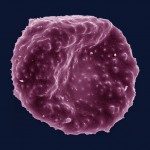Link to Pubmed [PMID] – 23101584
BMC Syst Biol 2012;6:135
BACKGROUND: Estrogen therapy has positively impact the treatment of several cancers, such as prostate, lung and breast cancers. Moreover, several groups have reported the importance of estrogen induced gene regulation in esophageal cancer (EC). This suggests that there could be a potential for estrogen therapy for EC. The efficient design of estrogen therapies requires as complete as possible list of genes responsive to estrogen. Our study develops a systems biology methodology using esophageal squamous cell carcinoma (ESCC) as a model to identify estrogen responsive genes. These genes, on the other hand, could be affected by estrogen therapy in ESCC.
RESULTS: Based on different sources of information we identified 418 genes implicated in ESCC. Putative estrogen responsive elements (EREs) mapped to the promoter region of the ESCC genes were used to initially identify candidate estrogen responsive genes. EREs mapped to the promoter sequence of 30.62% (128/418) of ESCC genes of which 43.75% (56/128) are known to be estrogen responsive, while 56.25% (72/128) are new candidate estrogen responsive genes. EREs did not map to 290 ESCC genes. Of these 290 genes, 50.34% (146/290) are known to be estrogen responsive. By analyzing transcription factor binding sites (TFBSs) in the promoters of the 202 (56+146) known estrogen responsive ESCC genes under study, we found that their regulatory potential may be characterized by 44 significantly over-represented co-localized TFBSs (cTFBSs). We were able to map these cTFBSs to promoters of 32 of the 72 new candidate estrogen responsive ESCC genes, thereby increasing confidence that these 32 ESCC genes are responsive to estrogen since their promoters contain both: a/mapped EREs, and b/at least four cTFBSs characteristic of ESCC genes that are responsive to estrogen. Recent publications confirm that 47% (15/32) of these 32 predicted genes are indeed responsive to estrogen.
CONCLUSION: To the best of our knowledge our study is the first to use a cancer disease model as the framework to identify hormone responsive genes. Although we used ESCC as the disease model and estrogen as the hormone, the methodology can be extended analogously to other diseases as the model and other hormones. We believe that our results provide useful information for those interested in genes responsive to hormones and in the design of hormone-based therapies.

